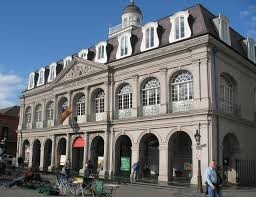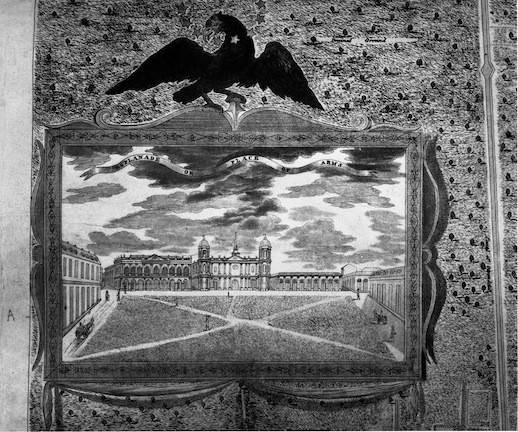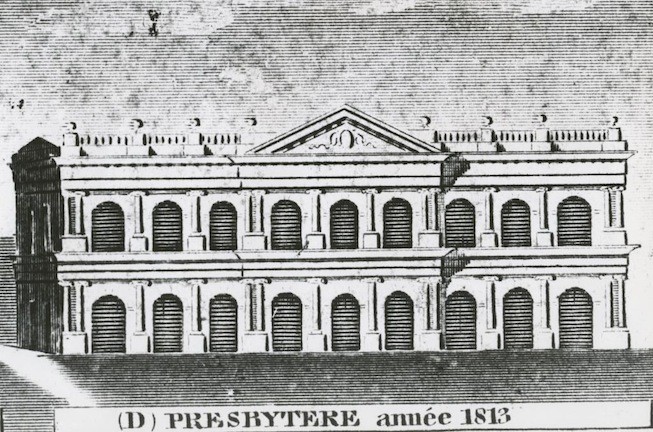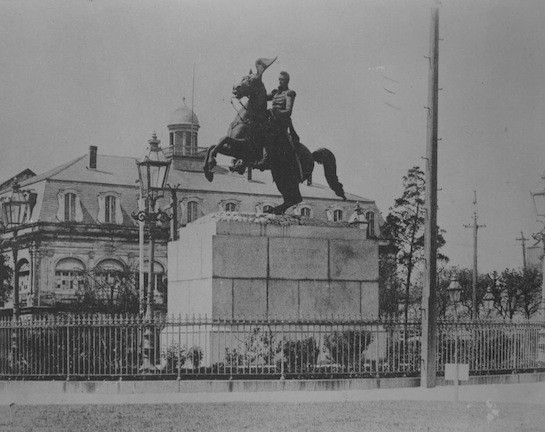The Presbytere and Louisiana State Museum
Introduction
Text-to-speech Audio
Images
The Presbytere and Louisiana State Museum as it appears today

Unfinished Presbytere as it appeared in 1803: At the time of the Louisiana Purchase, only the first floor was complete. Presbytere appears on the right. | Source: Courtesy of Louisiana State Museum.

The Presbytere in 1813, with second story completed. Courtesy of Louisiana State Museum.

Presbytere from Jackson Square, circa 1900: The cupola, added in 1847, is visible. The cupola went missing during the New Orleans Hurricane of 1915 and has not been recovered as of today. It was replaced in 2005 Courtesy of Louisiana State Museum.

Backstory and Context
Text-to-speech Audio
Sources
Mary Ann Wegmann, The Law Library of Louisiana, and University of New Orleans History Department, “The Presbytère: Home of the Louisiana Supreme Court, 1822-1853 ,” New Orleans Historical, accessed February 3, 2017,http://www.neworleanshistorical.org/items/show/804.
Presbytere History, Historic American Buildings Survey, HABS 18-5, Library of Congress, 1935.
Rightor, Henry. Standard History of New Orleans, Louisiana. Chicago: The Lewis Publishing Company: 1900.
Wardens of the Church of St. Louis of New Orleans v. Antoine Blanc, Bishop of New Orleans, 8 Rob. 51, 1844 La. Lexis 96 (La. June 1844).
